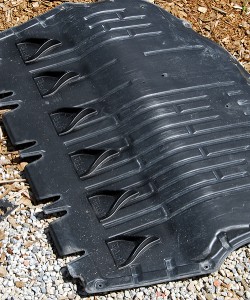An unexpected modification outcome…
One of the most exciting aspects about making car modifications is hitting the road and finding out how the car drives after the performance mods have been made. Recently, after fitting new intercooler plumbing, I did just this – but something rather unexpected happened.
But back a few steps.
I’d installed a new intercooler and built its associated pipework but I’d been a bit unhappy with the plumbing: it was about 80 per cent right but I thought I could do better the second time around. I wanted to change aspects like the tightness and number of bends, and to add some brackets to hold the pipes more securely in place. I also decided that this time I wouldn’t grind back any welds, thus leaving the joins much stronger.
So I measured and cut and welded and painted. The end result was one I was much happier with – I reckoned the revised plumbing fitted better, flowed more freely and would be more durable.
Fitting the plumbing required removing the bumper cover and undertray – a fiddly job. So while the undertray was removed, I decided to add some aero enhancements. Across the full width of the undertray I glued a line of Airtab vortex generators (pictured above). The idea was to encourage the boundary layer to stay attached to the undertray, so better drawing-out air from the engine bay as the flow moved past the end of the tray.
I already had the Airtabs and gluing them in place was only a five minute job – so if they worked, great; and if they didn’t, not much time or money lost.
But when I drove down the road for the first time the Airtabs were furthest from my mind. Because what I could feel was a vibration – a vibration through the floor, gear lever and steering wheel.
Being an older design diesel, the engine in my Skoda Roomster is quite coarse, and so my first thought was that the intercooler plumbing was too firmly mounted, so transferring engine vibration to the bodywork. This idea was a real downer: to access the brackets holding the plumbing would require taking off the undertray and front bumper cover – as I have said, a fiddly exercise. (And I hate doing those sorts of tasks!)
I checked under the bonnet to ensure that the pipework wasn’t banging against anything – but it looked fine. I idled the engine and physically felt the pipes – and yes, there was quite a lot of vibration occurring in them (perhaps also because of internal pressure waves – diesels breathe a lot of air, even at idle). But then again, that’d been the case with the first lot of plumbing – where driving vibration wasn’t an issue.
I went for a longer drive at highway speeds and the vibration was so bad that I knew something had to be done. And it was more than vibration – the car was also noisier. This was terrible – even in standard form the Roomster diesel is no paragon of NVH… and I’d made it a lot worse.
So how much of the noise and vibration was coming from the engine? I drove along at 100 km/h and then selected neutral, letting the revs drop back to idle. And you know what? – most of the vibration and noise remained!
So what the hell was going on?
Then I remembered the vortex generators. Surely, surely they couldn’t be causing these problems? There was only one way to find out – off they came.
Incredibly, the noise and vibration disappeared.
So the vortex generators must have been causing massive turbulence under the car – the vortices perhaps impinging on the floor near the firewall, shaking the car and generating noise. It seems implausible, but there’s no other possible explanation…

 Julian Edgar, 50, has been writing about car modification and automotive technology for nearly 25 years. He has owned cars with two, three, four, five, six and eight cylinders; single turbo, twin turbo, supercharged, diesel and hybrid electric drivelines. He lists his transport interests as turbocharging, aerodynamics, suspension design and human-powered vehicles.
Julian Edgar, 50, has been writing about car modification and automotive technology for nearly 25 years. He has owned cars with two, three, four, five, six and eight cylinders; single turbo, twin turbo, supercharged, diesel and hybrid electric drivelines. He lists his transport interests as turbocharging, aerodynamics, suspension design and human-powered vehicles.

